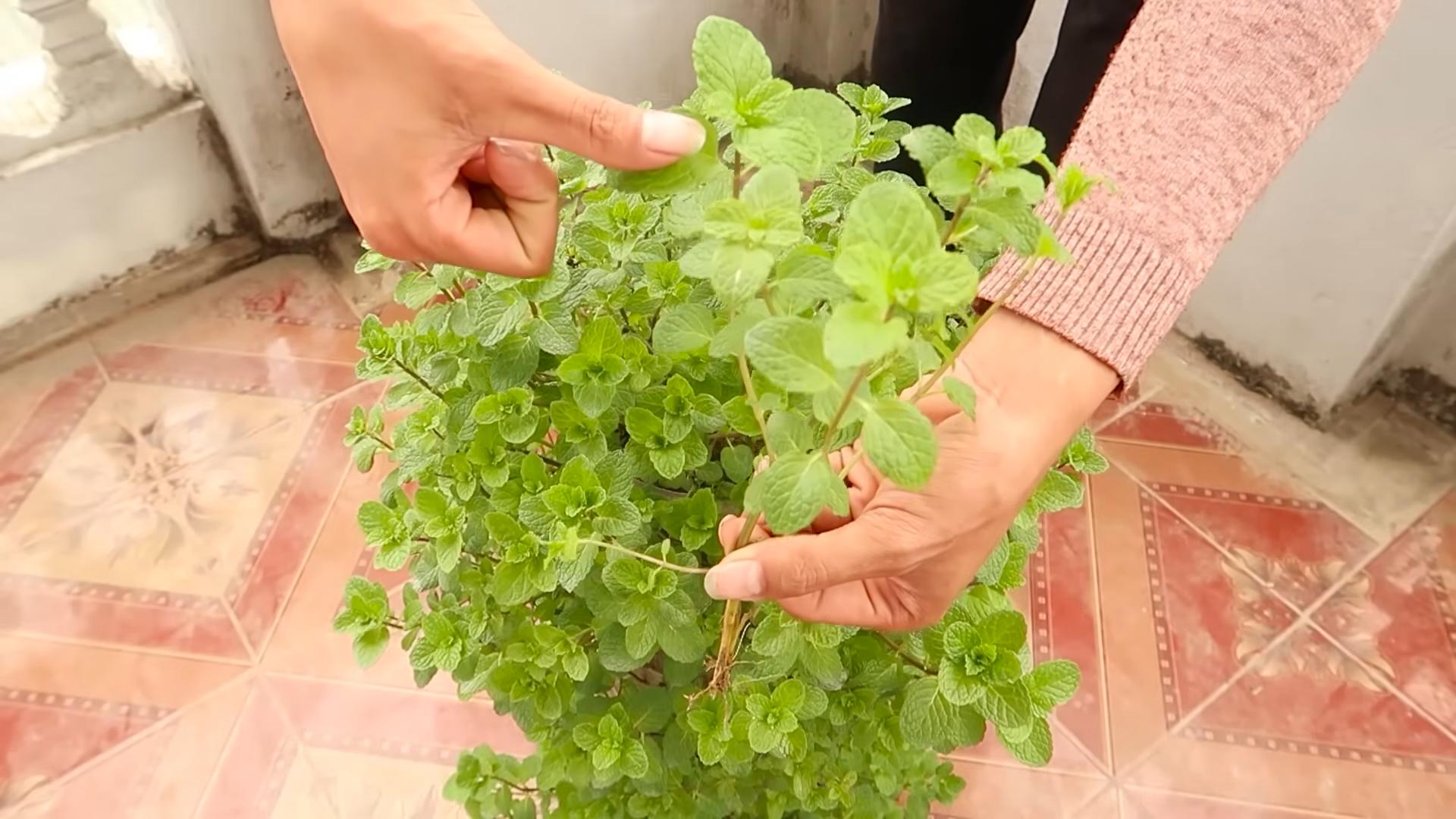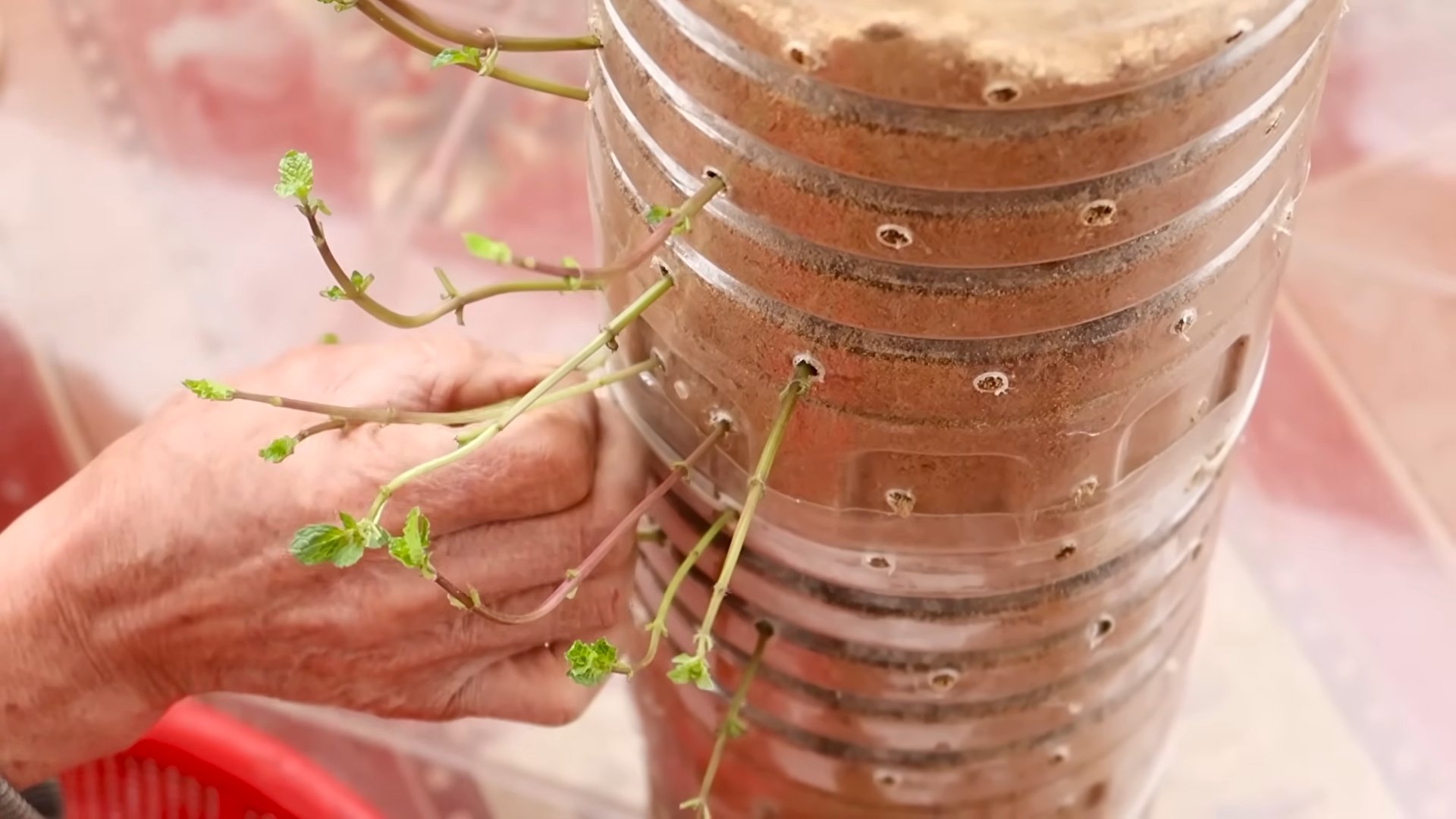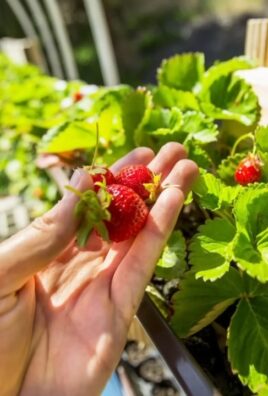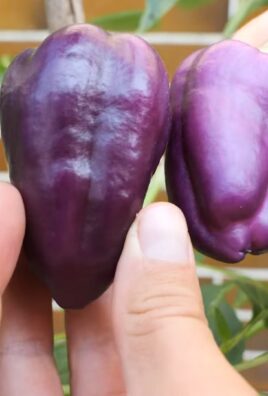Grow oregano at home, and unlock a world of culinary possibilities right outside your door! Imagine stepping into your garden, the sun warming your face, and snipping fresh, fragrant oregano to elevate your next pasta sauce, pizza, or grilled chicken dish. Forget those bland, dried herbs from the supermarket – this is about experiencing the vibrant, authentic flavor that only freshly grown oregano can provide.
Oregano, with its rich history stretching back to ancient Greece and Rome, wasn’t just a culinary staple; it was a symbol of joy and well-being. The Greeks believed it was created by the goddess Aphrodite, and used it for medicinal purposes and to ward off evil spirits. Today, while we might not be fending off evil spirits, we can certainly appreciate oregano’s potent health benefits and its ability to transform ordinary meals into extraordinary culinary experiences.
But why should you bother learning to grow oregano at home? Well, for starters, it’s incredibly easy! This hardy herb thrives in various conditions and requires minimal maintenance. Plus, growing your own herbs is a fantastic way to save money, reduce your carbon footprint, and connect with nature. In this DIY guide, I’m going to share my favorite tips and tricks for successfully growing oregano at home, even if you have a tiny balcony or limited gardening experience. Get ready to unleash your inner gardener and enjoy the delicious rewards of homegrown oregano!

Growing Oregano at Home: A Beginner’s Guide
Hey there, fellow plant enthusiasts! I’m so excited to share my experience with growing oregano at home. It’s surprisingly easy, rewarding, and gives you access to fresh, flavorful oregano whenever you need it. Plus, the aroma is just divine! Let’s dive in.
Choosing Your Oregano Variety
First things first, oregano isn’t just oregano. There are several varieties, each with its own unique flavor profile. Here are a few popular choices:
* Greek Oregano (Origanum vulgare hirtum): This is the classic, most potent oregano you’ll find in Mediterranean cuisine. It has a strong, peppery flavor.
* Italian Oregano (Origanum x majoricum): A milder, sweeter oregano that’s perfect for Italian dishes. It’s actually a hybrid of oregano and sweet marjoram.
* Mexican Oregano (Lippia graveolens): While technically not a true oregano, it offers a similar flavor profile with a hint of citrus. It’s commonly used in Mexican cooking.
* Golden Oregano (Origanum vulgare ‘Aureum’): This variety is more ornamental, with beautiful golden leaves. The flavor is milder than Greek oregano.
I personally love growing Greek oregano because of its intense flavor, but feel free to experiment and find your favorite!
Starting from Seed vs. Cuttings vs. Buying a Plant
You have three main options for getting your oregano plant started:
* Seeds: Starting from seed is the most economical option, but it takes the longest.
* Cuttings: Propagating from cuttings is a faster way to get a new plant, especially if you already have access to an oregano plant.
* Buying a Plant: Buying a small plant from a nursery is the quickest and easiest way to get started.
I’ll cover all three methods in detail below.
Growing Oregano from Seed
This method requires a bit more patience, but it’s incredibly rewarding to watch your oregano sprout from tiny seeds!
What You’ll Need:
* Oregano seeds
* Seed starting tray or small pots
* Seed starting mix
* Spray bottle
* Plastic wrap or humidity dome
* Warm, sunny location or grow light
Step-by-Step Instructions:
1. Prepare the Seed Starting Tray: Fill your seed starting tray or small pots with seed starting mix. Gently pat down the soil.
2. Sow the Seeds: Oregano seeds are tiny, so sprinkle them sparingly over the surface of the soil. You don’t want to overcrowd them.
3. Cover the Seeds Lightly: Gently press the seeds into the soil, but don’t bury them too deep. They need light to germinate. A very light dusting of vermiculite is also a good option.
4. Water Gently: Use a spray bottle to mist the soil thoroughly. You want to moisten the soil without disturbing the seeds.
5. Create a Humid Environment: Cover the seed starting tray with plastic wrap or a humidity dome to create a humid environment. This will help the seeds germinate.
6. Provide Warmth and Light: Place the seed starting tray in a warm, sunny location or under a grow light. Oregano seeds need warmth and light to germinate. The ideal temperature is between 70-75°F (21-24°C).
7. Monitor Moisture Levels: Check the soil moisture daily and mist as needed to keep it consistently moist. Don’t let the soil dry out.
8. Wait for Germination: Oregano seeds typically germinate in 7-14 days. Once the seedlings emerge, remove the plastic wrap or humidity dome.
9. Thin the Seedlings: Once the seedlings have a few sets of true leaves, thin them out, leaving only the strongest seedlings in each cell or pot.
10. Transplant the Seedlings: Once the seedlings are large enough to handle (about 2-3 inches tall), transplant them into larger pots or directly into your garden.
Propagating Oregano from Cuttings
This is a faster and easier way to get a new oregano plant, especially if you already have access to a mature plant.
What You’ll Need:
* Healthy oregano plant
* Sharp, clean scissors or pruning shears
* Rooting hormone (optional, but recommended)
* Small pots
* Potting mix
* Water
Step-by-Step Instructions:
1. Take Cuttings: Choose healthy stems that are about 4-6 inches long. Cut the stems just below a node (where leaves emerge).
2. Remove Lower Leaves: Remove the leaves from the bottom 1-2 inches of the stem. This will prevent them from rotting when you put the cutting in soil.
3. Apply Rooting Hormone (Optional): Dip the cut end of the stem in rooting hormone. This will help the cutting develop roots faster.
4. Plant the Cuttings: Fill small pots with potting mix. Make a small hole in the soil and insert the cutting. Gently press the soil around the stem.
5. Water the Cuttings: Water the cuttings thoroughly.
6. Create a Humid Environment: Cover the pots with plastic bags or place them in a humidity dome to create a humid environment.
7. Provide Warmth and Light: Place the cuttings in a warm, bright location, but avoid direct sunlight.
8. Monitor Moisture Levels: Check the soil moisture daily and water as needed to keep it consistently moist.
9. Wait for Rooting: The cuttings should develop roots in 2-4 weeks. You can check for roots by gently tugging on the stem. If you feel resistance, it means the roots have formed.
10. Transplant the Cuttings: Once the cuttings have developed a good root system, transplant them into larger pots or directly into your garden.
Caring for Your Oregano Plant
Whether you started from seed, cuttings, or bought a plant, the care requirements are the same.
Sunlight:
Oregano thrives in full sun, meaning at least 6-8 hours of direct sunlight per day. If you’re growing it indoors, place it near a sunny window or use a grow light.
Soil:
Oregano prefers well-draining soil. A mix of potting soil, perlite, and vermiculite works well. Avoid heavy, clay-based soils, as they can retain too much moisture and lead to root rot.
Watering:
Water oregano regularly, but don’t overwater. Allow the soil to dry out slightly between waterings. Overwatering can lead to root rot. Check the soil moisture by sticking your finger into the soil. If the top inch feels dry, it’s time to water.
Fertilizing:
Oregano doesn’t need a lot of fertilizer. A light feeding with a balanced fertilizer (e.g., 10-10-10) in the spring is usually sufficient. Avoid over-fertilizing, as this can reduce the flavor of the leaves.
Pruning:
Pruning is essential for keeping your oregano plant healthy and productive. Regularly pinch back the tips of the stems to encourage bushier growth. You can also prune back the plant by about one-third in the spring to promote new growth.
Harvesting:
You can start harvesting oregano leaves once the plant is about 6-8 inches tall. Simply snip off the stems with scissors or pruning shears. The flavor of oregano is most intense just before the plant flowers.
Overwintering:
Oregano is a perennial in warmer climates (zones 5-10), meaning it will come back year after year. In colder climates, you can overwinter your oregano plant indoors. Before the first frost, dig up the plant and pot it in a container. Bring it indoors and place it in a sunny location. Water sparingly during the winter months. You can also take cuttings in the fall and root them indoors to ensure you have new plants for the following spring.
Common Problems and Solutions
Even with the best care, you might encounter some problems when growing oregano. Here are a few common issues and how to address them:
* Root Rot: This is caused by overwatering. Make sure your soil is well-draining and allow the soil to dry out slightly between waterings.
* Aphids: These tiny pests can suck the sap from your oregano leaves. You can control aphids by spraying them with a strong stream of water or by using insecticidal soap.
* Spider Mites: These tiny pests can also damage oregano leaves. You can control spider mites by spraying them with water or by using miticide.
* Powdery Mildew: This fungal disease can cause a white, powdery coating on the leaves. You can prevent powdery mildew by providing good air

Conclusion
So, there you have it! Growing your own oregano at home isn’t just a fun project; it’s a gateway to fresher, more flavorful meals and a more sustainable lifestyle. Forget those dried-up, flavorless flakes from the supermarket – imagine the vibrant aroma and intense taste of freshly harvested oregano infusing your favorite dishes. From pizzas and pastas to grilled meats and Mediterranean salads, the possibilities are truly endless.
This DIY trick is a must-try for several compelling reasons. First and foremost, you’re in complete control of the growing process. You can choose organic methods, ensuring your oregano is free from harmful pesticides and chemicals. Secondly, it’s incredibly cost-effective. A single packet of oregano seeds or a small starter plant can yield a bountiful harvest that will last for months, if not years. Think of all the money you’ll save on store-bought herbs! Thirdly, it’s incredibly rewarding. There’s something deeply satisfying about nurturing a plant from seed to harvest and then using it to create delicious meals.
But the benefits don’t stop there. Growing oregano at home also adds a touch of greenery to your living space, purifying the air and creating a more relaxing atmosphere. Plus, it’s a fantastic way to connect with nature, even if you live in an urban environment.
Ready to take your oregano game to the next level? Consider these variations:
* **Experiment with different varieties:** Did you know there are several types of oregano, each with its own unique flavor profile? Greek oregano is known for its strong, pungent taste, while Italian oregano is milder and sweeter. Explore different varieties to find your favorite.
* **Grow oregano indoors:** If you don’t have a garden, don’t worry! Oregano thrives indoors with sufficient sunlight or a grow light. A sunny windowsill or a small indoor herb garden is all you need.
* **Dry your own oregano:** Preserve your harvest by drying your own oregano. Simply hang sprigs upside down in a cool, dry place or use a dehydrator. Homemade dried oregano is far superior to store-bought versions.
* **Oregano infused oil:** Create your own oregano infused oil by steeping fresh oregano sprigs in olive oil. This flavorful oil is perfect for drizzling over salads, pasta, or grilled vegetables.
Don’t be intimidated by the thought of growing your own herbs. Oregano is a relatively low-maintenance plant that’s easy to care for, even for beginners. With a little bit of sunlight, water, and love, you’ll be enjoying fresh, flavorful oregano in no time.
So, what are you waiting for? Grab some seeds or a starter plant and embark on your oregano-growing adventure today! We’re confident that you’ll be amazed by the results. And most importantly, don’t forget to share your experiences with us! We’d love to hear about your successes, challenges, and favorite ways to use your homegrown oregano. Share your photos and tips in the comments below – let’s create a community of oregano enthusiasts! Let us know how this DIY trick worked for you.
Frequently Asked Questions (FAQ)
Q: How much sunlight does oregano need?
A: Oregano thrives in full sun, meaning it needs at least 6-8 hours of direct sunlight per day. If you’re growing oregano indoors, place it near a sunny window or use a grow light to supplement natural light. Insufficient sunlight can lead to leggy growth and reduced flavor.
Q: How often should I water my oregano plant?
A: Oregano prefers well-drained soil and doesn’t like to be constantly wet. Water thoroughly when the top inch of soil feels dry to the touch. Avoid overwatering, as this can lead to root rot. During hot, dry weather, you may need to water more frequently.
Q: What kind of soil is best for growing oregano?
A: Oregano prefers well-draining soil that is slightly alkaline. A mixture of potting soil, perlite, and compost is ideal. Avoid heavy clay soils, as they can retain too much moisture. You can also amend your soil with lime to increase its alkalinity.
Q: How do I harvest oregano?
A: You can start harvesting oregano once the plant is about 6-8 inches tall. Simply snip off stems with scissors or pruning shears, leaving at least 4 inches of growth. Regular harvesting encourages bushier growth and prevents the plant from becoming leggy. The best time to harvest oregano is in the morning, after the dew has dried.
Q: Can I grow oregano from cuttings?
A: Yes, oregano is very easy to propagate from cuttings. Simply take a 4-6 inch cutting from a healthy stem, remove the lower leaves, and place the cutting in a glass of water. Roots should develop within a few weeks. Once the roots are about an inch long, you can transplant the cutting into a pot filled with well-draining soil.
Q: How do I dry oregano?
A: There are several ways to dry oregano. One method is to hang sprigs upside down in a cool, dry, well-ventilated place. Another method is to use a dehydrator, following the manufacturer’s instructions. You can also dry oregano in the oven on a very low temperature (around 170°F) for a few hours. Once the oregano is completely dry, crumble the leaves and store them in an airtight container.
Q: What are some common pests and diseases that affect oregano?
A: Oregano is generally pest-resistant, but it can be susceptible to aphids, spider mites, and whiteflies. These pests can be controlled with insecticidal soap or neem oil. Overwatering can lead to root rot, so it’s important to ensure that the soil is well-draining.
Q: Can I grow oregano in a container?
A: Yes, oregano thrives in containers. Choose a pot that is at least 6 inches in diameter and has drainage holes. Use a well-draining potting mix and place the container in a sunny location. Container-grown oregano may need to be watered more frequently than oregano grown in the ground.
Q: Is oregano a perennial or an annual?
A: Oregano is a perennial herb, meaning it will come back year after year. In colder climates, it may die back in the winter, but it will regrow in the spring. To protect oregano from frost, you can mulch around the base of the plant or bring it indoors during the winter months.
Q: What are some uses for oregano besides cooking?
A: Oregano has a variety of medicinal and cosmetic uses. It has antibacterial, antifungal, and antiviral properties. Oregano oil can be used to treat skin infections, respiratory problems, and digestive issues. Oregano can also be used to make tea, which is said to have calming and anti-inflammatory effects. Always consult with a healthcare professional before using oregano for medicinal purposes.





Leave a Comment